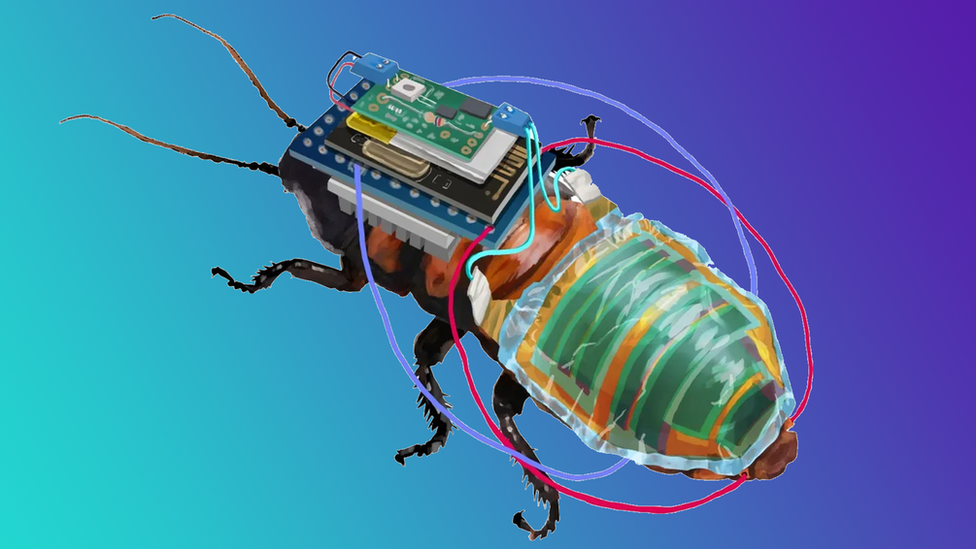Scientists create 'cyborg cockroach' for missions
- Published
- comments

It's hoped the robo-cockroach could one day be used for rescue missions
Just the thought of cockroaches sends shivers down the spines of many, but scientists in Japan think the bugs could one day be used for good!
The researchers, from the RIKEN Cluster for Pioneering Research, have come up with a unique system for creating cyborg bugs which can be operated using a remote control.
Controlling bugs in this way isn't actually a new idea and it's actually been something scientists have been working on for many years.
However, the recent study carried out by the scientists in Japan shows what this could look like in reality.
It's hoped the critters may eventually be used during search and rescue missions, or to scout around dangerous places.
What did the scientists come up with?
For the study, the researchers used the Madagascar hissing cockroach. The insects can get about five to eight centimetres long in length and are known for their loud snake-like hiss.
The scientists fitted the bug with a thin electronic backpack which they had created on the upper section of its body. As this was so lightweight, it had very little impact on the insect's ability to move around with ease.
The backpack contained a rechargeable battery and what's known as a wireless control module which is what enabled the researchers to control the cockroach's movements remotely.
The Madagascar hissing cockroach was used for the study
A solar cell module was attached to the lower section of the cockroach. This meant the backpack could be recharged using artificial sunlight, which would come in handy if the critters were out and about on missions.
Despite the promising results of the study, the researchers say there is still a long way to go before cockroaches can actually used on missions.
"The current system only has a wireless locomotion control system, so it's not enough to prepare an application such as urban rescue," said Kenjiro Fukuda who is an expert in flexible electronics at Japan's Riken.
"By integrating other required devices such as sensors and cameras, we can use our cyborg insects for such purposes."
- Published9 November 2013
- Published29 May 2018
- Published21 January 2022
